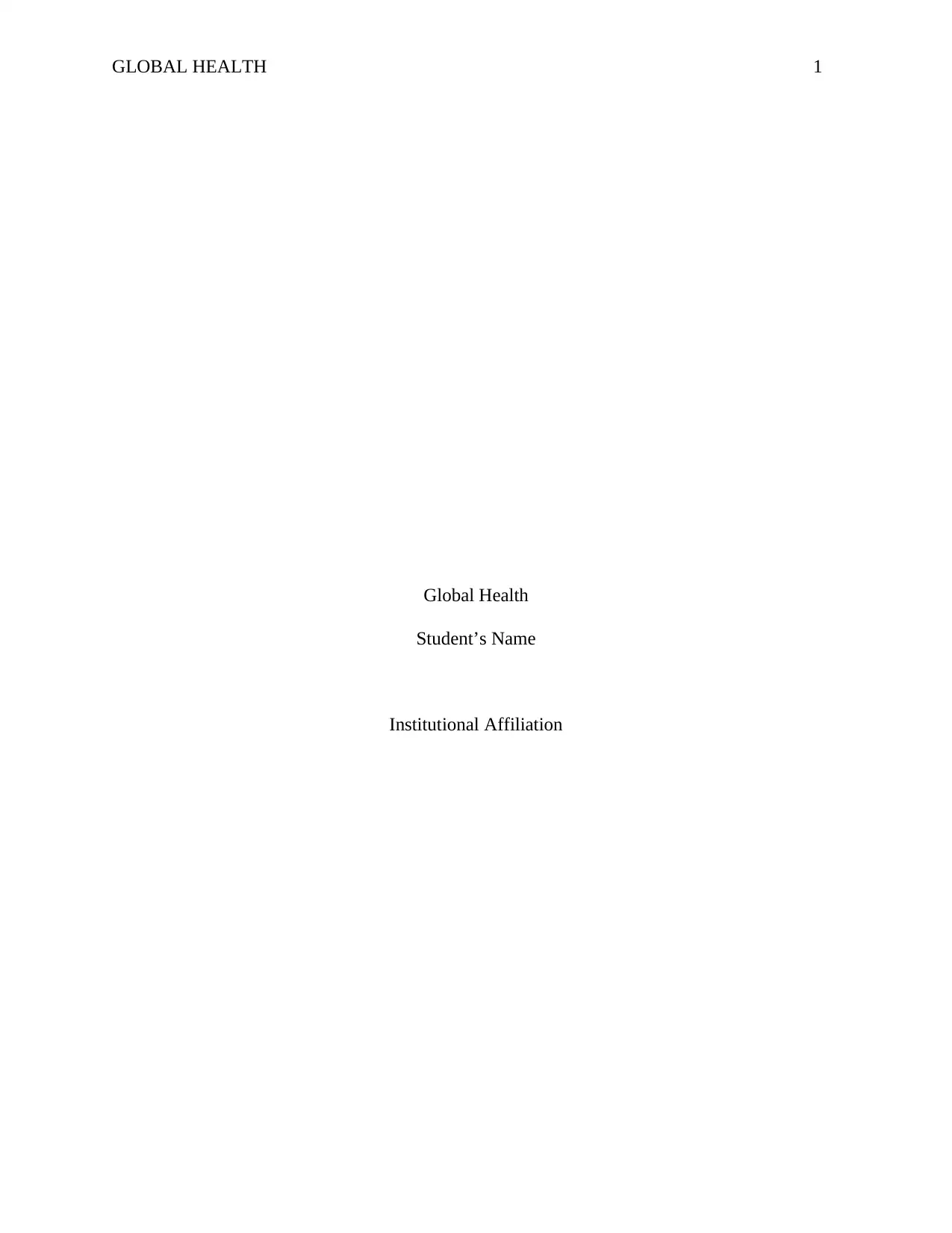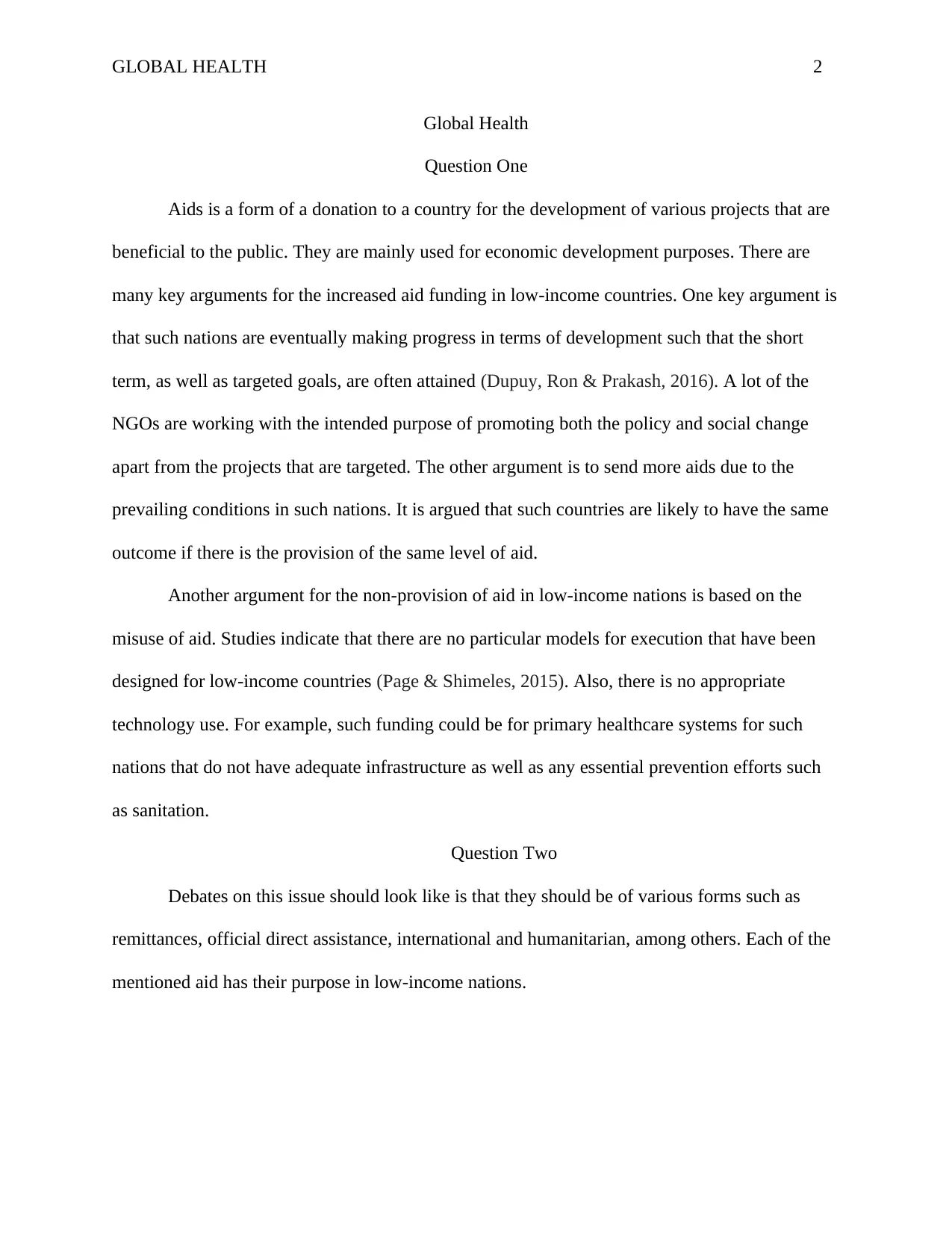Global Health: Analyzing Aid, Its Types, and Its Controversies
VerifiedAdded on 2022/10/06
|3
|381
|17
Report
AI Summary
This report explores the complexities of global health aid, examining its various forms, including humanitarian assistance, bilateral aid, and multilateral aid. It delves into the debates surrounding the effectiveness of aid in low-income countries, discussing arguments for and against its provision, and the role of NGOs. The report also highlights the different types of aid, such as official direct assistance and remittances, and their specific purposes. Furthermore, it addresses the controversies surrounding aid, including concerns about dependency, corruption, and the efficiency of its use. The report also touches upon the US's contribution to international aid, its standing compared to other nations, and the general belief in the US regarding the role of NGOs in humanitarian efforts. Overall, the report provides a comprehensive overview of global health aid, its challenges, and its impact on recipient countries.
1 out of 3





![[object Object]](/_next/static/media/star-bottom.7253800d.svg)